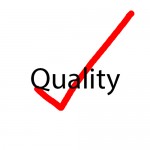In last week’s discussion with Kenneth Fine, president and cofounder of Proven Process, Fine brought out several more recent challenges that the medical device industry is facing—including Obamacare and higher user expectations.
Joined by his colleague Michael Kanis, part II of this Q&A with MedTech Intelligence reviews the importance of quality across the product design process.
MedTech Intelligence: How do your teams integrate quality throughout the design process?
Kenneth Fine: In our case, every team has a quality engineer. Throughout the process, our SOP for design controls requires a pretty significant number of peer reviews, phase and sub- phase reviews. The biggest part of the quality [element] is how we communicate with our customer; we always set up mechanisms so that we communicate with them on a regular basis. If they’re not physically here all the time, we often make space for them in our facility, or they make space for us in their facilities. We have a status meeting on a weekly basis and meet at an executive level at least once monthly. We talk about the quality attributes that we measure across the project. Depending on the phase of the project, the quality engineer, program leaders and the team will measure various quality attributes of the program. Some of them are business-related quality attributes such as how are we meeting time goals, whether we are on budget, etc. Other quality attributes involve ensuring that requirements of the product are designed correctly (i.e., whether the design is meeting requirements)—we don’t wait until the end to establish that; we’re doing it continuously through the development process. Our SOPs require us to address that and to integrate risk management elements as required and quality attributes across the whole project.
MTI: Ken, earlier this year, you shared a perspective that most manufacturing problems are design related. Can you expand on this insight?
Fine: It is related to DFM and also how you account for quality across design.
We find that when design is compartmentalized from manufacturing and from other elements—again, it’s the issue with interfaces—one of the most difficult things to do is take the design and move it into a manufacturing environment and then start reproducing that design in higher volumes. With new product introductions, much of the pain that occurs are design deficiencies that manifest themselves as you start amplifying the number of units that you’re going to make, as this brings up the probability that something that was hidden will come out. Address this by taking a team approach, and address it early in the project.
Challenge the design along the way: Not only from a design perspective, but also a manufacturing perspective [and] a risk perspective. Not waiting until transitioning into manufacturing to find those things is a very important part of making sure that a design is robust in that the manufacturing experience with that product is satisfactory. It is an evolution. There are no abrupt transitions. I don’t think we’re unique in applying the team approach. The team has the right resources for the entire lifecycle of the product, so you can introduce and address issues that are normally addressed later as early as possible, and try to grab failures that may occur early in the process when it’s less expensive to deal with than at the end.
Michael Kanis: We run into this all the time. When you’re developing the product and you’re a program manager or a VP of R&D, you have a budget. Decisions are made in the program development process: “We’re going to spend “x” amount of time on the concept and feasibility of the product and “x” amount of time on the detailed development of the product.” We find that, we have to push back to the customer and say, “we’re going to do a couple of iterations at this stage of the process and a couple of iterations at the next stage of the process, and here’s the time and money required where we feel comfortable” (meaning we’ll vet out all the design issues). It’s finding the balance of whether the customer can afford the time and money in the initial budget so that when it goes to manufacturing, there won’t be time and money wasted at that end. It’s a balance that some companies are better at than others. If they don’t have the budget, then sometimes we don’t have the chance to vet out the design fully.







